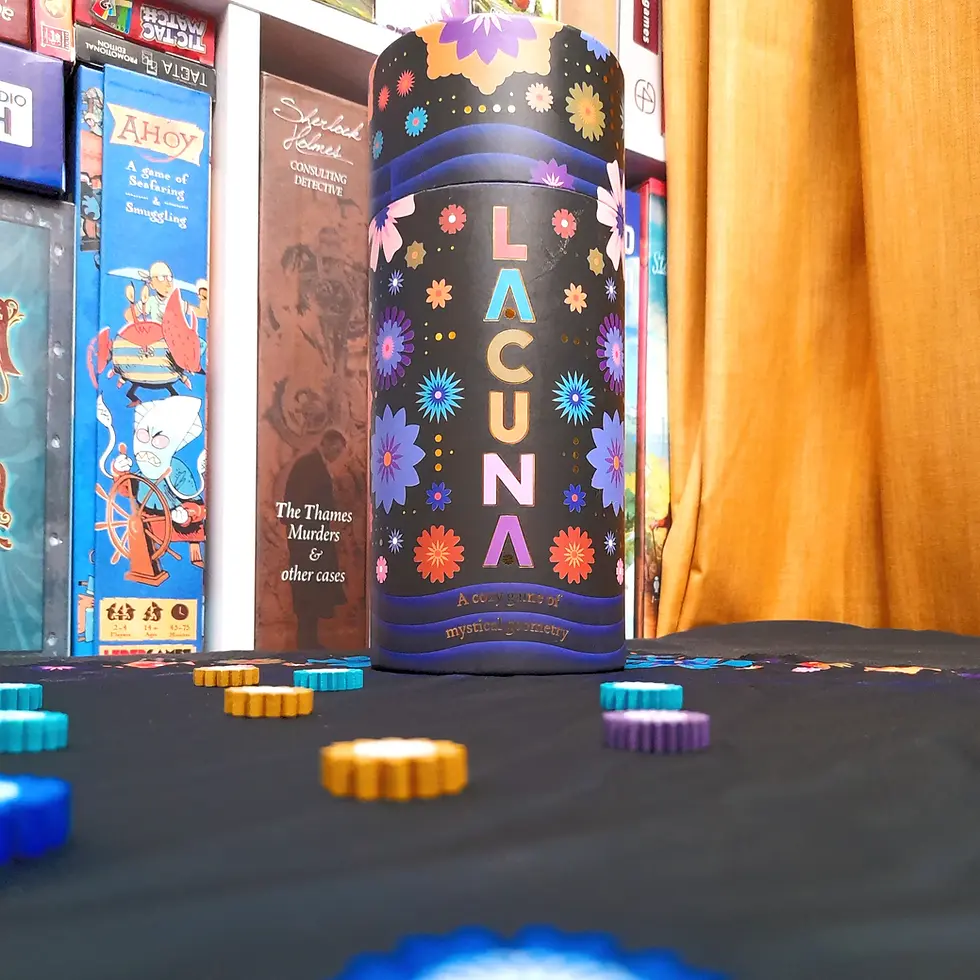Fish 'n' Flip... It's a rescue mission!
- Emily Critchell

- Jun 13, 2024
- 3 min read
Updated: Jun 28, 2024
With so many different creatures in the ocean, is it any wonder that when fishing with nets, you'll catch more than you bargained for? Well, in Fish 'n' Flip, you'll be working hard to release the sea creatures from their unfortunate entrapment. With rules for both a co-operative and competitive mode included, you'll have plenty of ways to enjoy this game.

This eco-friendly game helps to spread environmental awareness through the joy of board games. The hardest part of making a board game educational is trying to find the right balance between learning and fun without loosing the fun and joy that board games bring. I was keen to see how Helvetiq managed to bring these two worlds together.
First Impressions
The game has a strong environmentally friendly look to it, with it's cardboard sleeve instead of plastic wrap and neutral colour pallette. Upon opening the box, it's clearly well thought out on the eco-front with paper bands around the cards and no plastic in sight. The game includes 2 rulebooks, each in a different language, however you have to open them up to discover which is which. Once I'd opened the english version, the rules were nice and clear with plenty of diagrams explaining what to do and I really liked the inclusion of rules for both co-operative play and competitive; I was keen to find out how they differed.
Game Play Overview

The co-operative variation of this game is the primary way Fish 'n' Flip was designed to be played. You'll be working together to free as many creatures from the net as you can before you run out of cards to play. Take it in turns to play one of your action cards which will flip/switch animals around and then clear all the animals that are adjacent to a matching animal facing in the same direction. Every group of animals freed will be worth points at the end of the game. The more animals freed, the better you have succeeded at the game.
In the competitive variation, you'll play in rounds with all players playing simultaneously and fending for themselves. Instead of a continuous grid fo creatures, you'll have 9 to play for each round with any remaining cards being discarded between rounds. Once you've emptied the deck, shuffle the discard pile together and play through the new deck once more. Whoever has the most freed animals by the end of the game wins.
Pros and Cons

I love the fact that this game can be played both co-operatively and competitively with variations on how the game plays accordingly. This gives the game more longevity and a different experience each time you play. There's a nice amount of strategy without being too complicated and really gets you thinking about how you can manipulate the sea creatures to work for you. The cards have a nice thickness to them without being too weighty and with more creatures than you need for a game, you can always play with your favourite creatures and figure out which animal ability is best for you. The game is great for both young and old but if you prefer your heavier Euro style games, then you may want to look elsewhere.
Final Verdict
Overall, I felt that this game struck a really nice balance between gaming and education, with the focus being on having fun whilst also learning about releasing sea creatures. I loved how the co-operative and competitive played differently without feeling like two completely different games but they had enough variation to make both versions of the game enjoyable.
In conclusion, we would rate this game a 9.1/10
.webp)







Comments